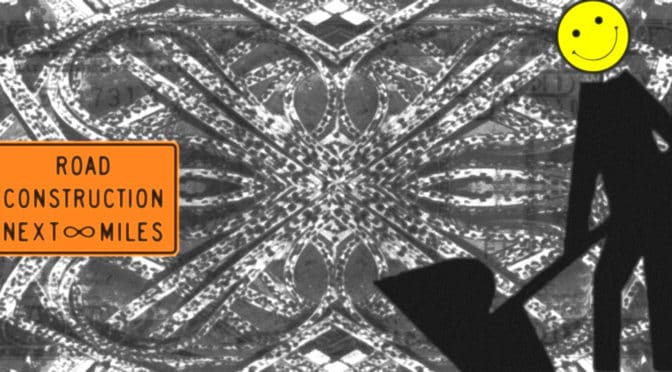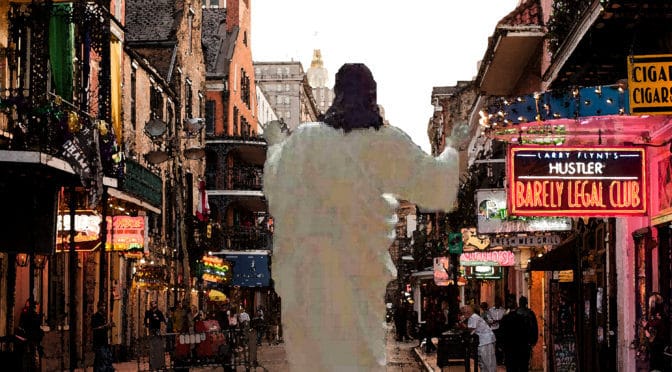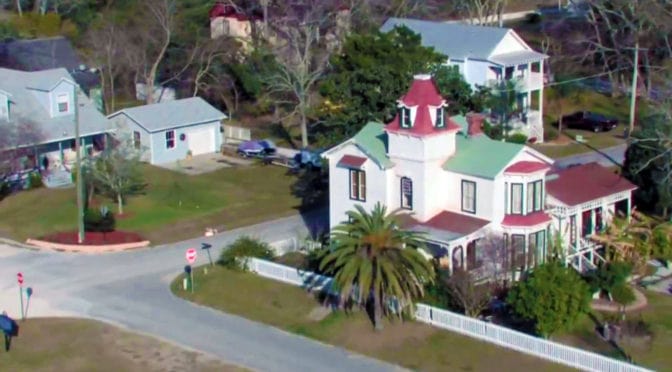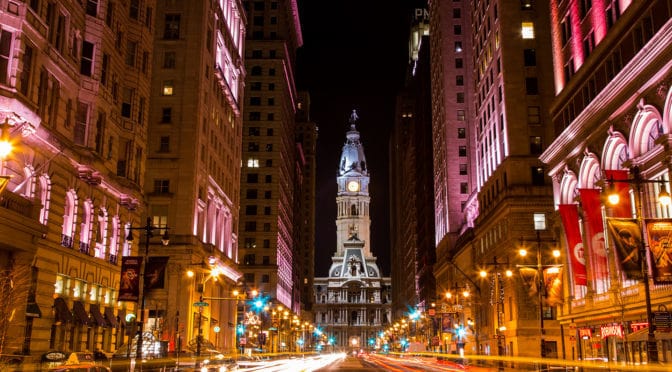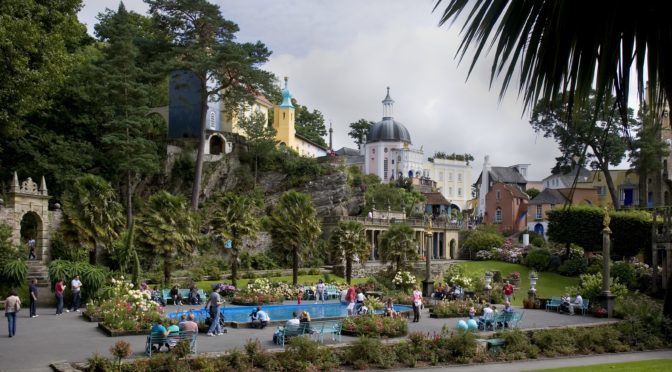The Outlaw Urbanist was able to gain access to this exclusive image, which accurately represents the dreaming state of members in the American Society of Civil Engineers (ASCE) and the American Concrete Institute (ACI). The image was compiled using the latest double-secret beta version of new Dreamscape Image Capture Technology (DIC-TEC 1.2) (you may assume from Apple). The subject matter of the dreamscape is fascinating. However, even more so was the remarkable degree of consistency found during the dreaming state for more than four dozen engineers and concrete-mixers, from which this composite image was created. Of course, being engineers and concrete-mixers they universally dream in black and white. Because of this, certain aspects of the composite image have been colorized using the ‘vibrancy’ function available in the DIC-TEC software.
All posts by Administrator
MORESO | What Would Jesus Do | The Sermon on the Street
Blessings on the poorly connected street,
For they shall find a grid to call home.
Blessings on the street that suffers isolation,
For they shall find comfort in a family of streets.
Blessings on the meek street,
For they shall inherit the city’s fortunes.
Blessings on streets that hunger and thirst for righteous design,
For they shall be filled with people.
Blessings on the safe streets,
For they shall provide mercy to pedestrians.
Blessings on the richly connected streets,
For they shall become a city.
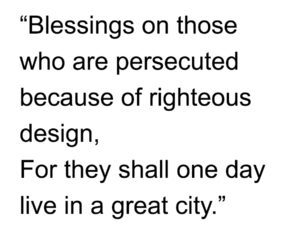 Blessings on the placemakers,
Blessings on the placemakers,
For they shall be called the children of the city.
Blessings on those who are persecuted because of righteous design,
For they shall one day live in a great city.
Blessings on you when people insult you, persecute you, and falsely say all kinds of evil against the city.
Rejoice and be glad because great are your rewards in the city, for in the same way they persecuted the prophets who were before you.
You are the salt of the Earth but if the salt loses its saltiness, how can it be made salty again? It is no longer good for anything, except to be thrown out and trampled over by the automobile.
You are the light of the city. A city built on a hill cannot be hidden. Neither do people light a lantern and hide it. Instead they put it on a post in the street, and it gives light to all pedestrians on that street. In the same way, let your city lights shine before others, that they may see your good streets and glorify the greatness of your city.
Moreso is a series of short ruminations or thoughts of the moment, usually of less than 500 words, from The Outlaw Urbanist.
Urban Patterns | Old Town Fernandina | Spanish Laws of the Indies
“Old Town, the girl’s a fool, she broke the rule…”
— Old Town, Thin Lizzy
Urban Patterns | Old Town Fernandina | Spanish Laws of the Indies
by Dr. Mark David Major, AICP, CNU-A
Old Town Fernandina is located on the northern end of Amelia Island in Florida, immediately south of the border with the State of Georgia, and about 40 miles north of Downtown Jacksonville. Old Town Fernandina was the last Spanish settlement founded in North America based on the Laws of the Indies and, as such, is listed on the National Register of Historic Places. Old Town is located on an inlet to the St. Mary’s River and Amelia River from the Atlantic Ocean, which offered (and still does) a generous deep-water port on the Atlantic coast for fishing and trade. Fernandina Beach grew southward with the construction of the David Yulee cross-state railroad from Cedar Key-to-Fernandina Beach in 1861 so the center of retail/commercial activity in Fernandina Beach shifted to what is now called “Downtown Fernandina.” Downtown Fernandina is also listed on the National Register of Historic Places. Because of this, Old Town Fernandina is probably the ‘purest’ example of a town founded based on the Spanish Laws of Indies remaining in North America. Fort San Carlos used to be located to the west of Plaza San Carlos (open space on the left of Old Town) but two-thirds of the grounds on which the fort formerly sat has been lost due to soil erosion.

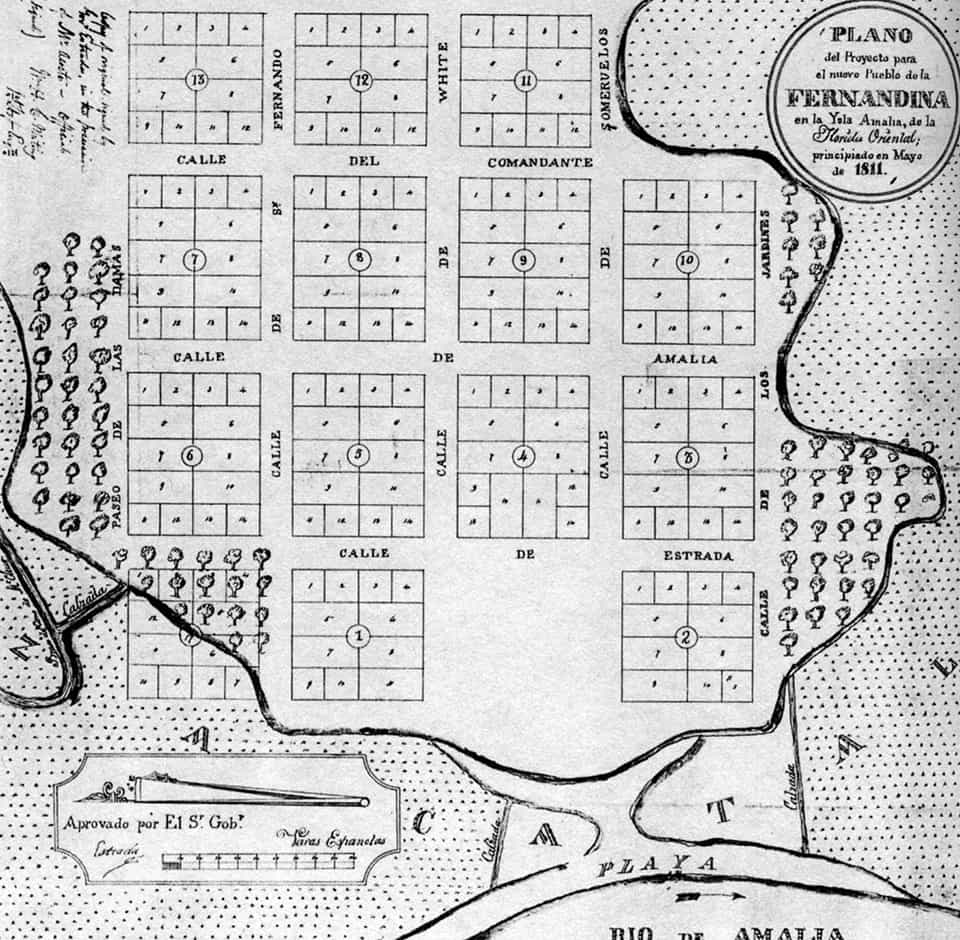
The earliest plat for the town (north is to the left in the above image) shows a regular grid layout ‘fitted’ to the shape of the topography of this peninsula in 4 x 4 block layout (5 x 5 street layout). The topography interrupts this geometric logic at the southeast (above, upper right-hand corner) and the northwest (above, lower left-hand corner) though the plat clearly shows the intention to in-fill to the northwest at the water’s edge in order to generate rectangular lots. Instead of a central plaza, the plaza in Fernandina was shifted to the what would become the water’s edge after the ‘disappearance’ of San Carlos into the river at the western edge of the plan (above, bottom edge of the drawing). The layout of lots within each block is also interesting with larger lots ‘internalized’ within the blocks and smaller lots ‘externalized’ along the eastern and western edges of the blocks. The exception is lots on the northern and southern edges of the blocks (identified as #1 and #2 in this plan) immediately adjacent to the plaza.
(Updated: April 7, 2017)
Urban Patterns is a series of posts from The Outlaw Urbanist presenting interesting examples of terrestrial patterns shaped by human intervention in the urban landscape over time.
Urban Patterns | Philadelphia, Pennsylvania USA
“Oh brother, are you gonna leave me,
Wastin´ away on the streets of Philadelphia.”
— Streets of Philadelphia, Bruce Springsteen
Urban Patterns | Philadelphia, Pennsylvania USA
by Dr. Mark David Major, AICP, CNU-A
Philadelphia is the largest city in the Commonwealth of Pennsylvania and the fifth-most populous city in the United States, with an estimated population of 1,567,442 and more than 6 million in the seventh-largest metropolitan statistical area, as of 2015. Philadelphia is the economic and cultural anchor of the Delaware Valley—a region located in the Northeastern United States at the confluence of the Delaware and Schuylkill rivers with 7.2 million people residing in the eighth-largest combined statistical area in the United States. In 1682, William Penn, an English Quaker, founded the city to serve as capital of the Pennsylvania Colony. Philadelphia played an instrumental role in the American Revolution as a meeting place for the Founding Fathers of the United States, who signed the Declaration of Independence in 1776 and the Constitution in 1787 (Source: Wikipedia).
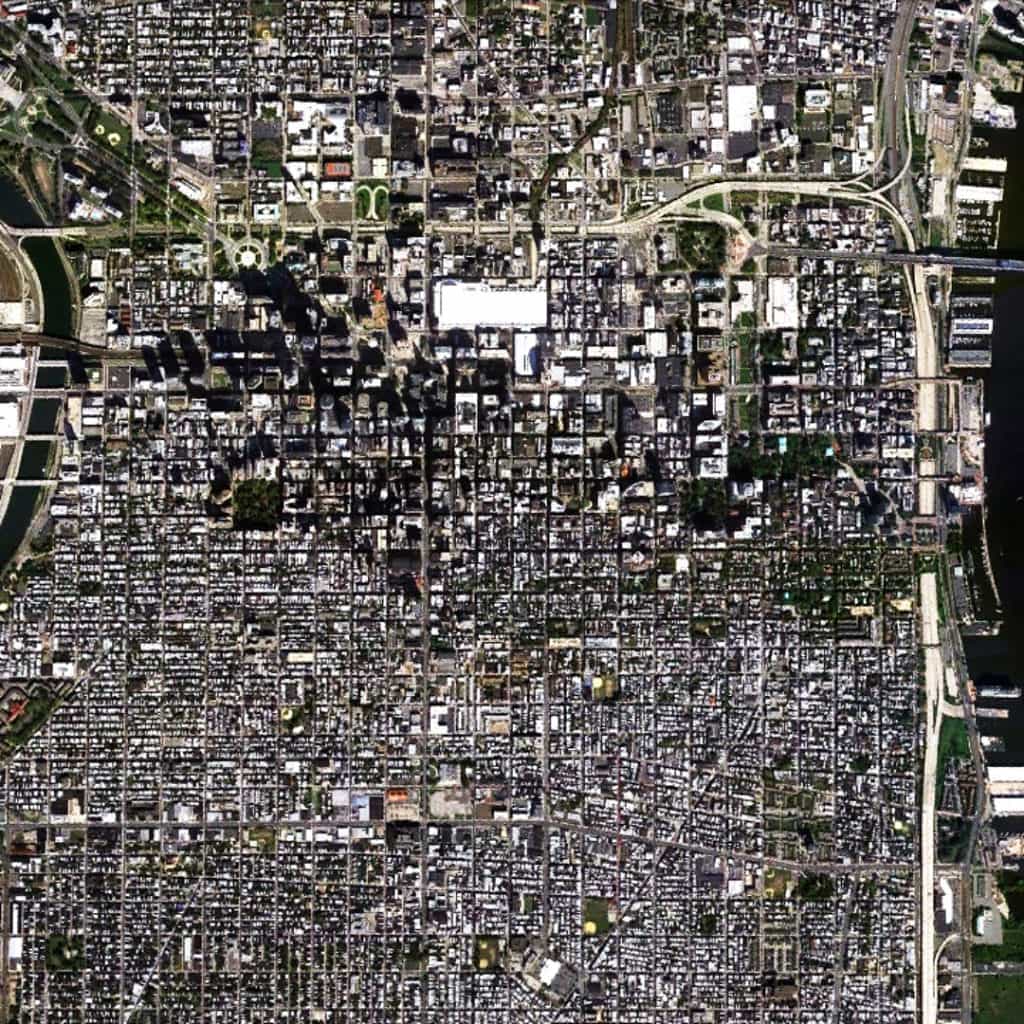
There are two remarkable yet seemingly contradictory things about the urban pattern in Philadelphia; in particular, within the bounds of William Penn’s original 1682 plan for the city. First, is the remarkable degree to which the plan has changed over more than 330 years of development. Most often, this has occurred through the manipulation of block sizes (upsizing and subdividing of urban blocks) even if the Vine Street Expressway (Interstate 676) and Delaware Expressway (Interstate 95) ringing the bounds of the original plan might, at first glance, draw the eye to these large-scale interventions. Second, is the remarkable degree to which the integrity of the original Penn plan for the city has endured literally thousands of small-scale interventions over more than 330 years of development. Taken together, this points to something even more remarkable, which is the instrumental power of the regular grid to be simultaneously flexible for and resilient to change over time.
(Updated: April 1, 2017)
Urban Patterns is a series of posts from The Outlaw Urbanist presenting interesting examples of terrestrial patterns shaped by human intervention in the urban landscape over time.
Urban Patterns | The Village | Portmeirion, Wales
“But still we walk into the valley,
And others try to kill the inner flame,
We’re burning brighter than before,
I don’t have a number, I’M A NAME!”
— Back in the Village, Iron Maiden
Urban Patterns | The Village | Portmeirion, Wales
by Dr. Mark David Major, AICP, CNU-A
The grounds of the Hotel Portmeirion, a resort near Penrhyndeudraeth in North Wales, famously served as the doppelgänger for “The Village” in the 1960s television series, The Prisoner. Portmeirion is a popular tourist village in Gwynedd, North Wales. It was designed and built by Sir Clough Williams-Ellis between 1925 and 1975 in the ‘style’ of an Italian village. From 1,500 feet above, “The Village” appears relatively unchanged some forty years later.
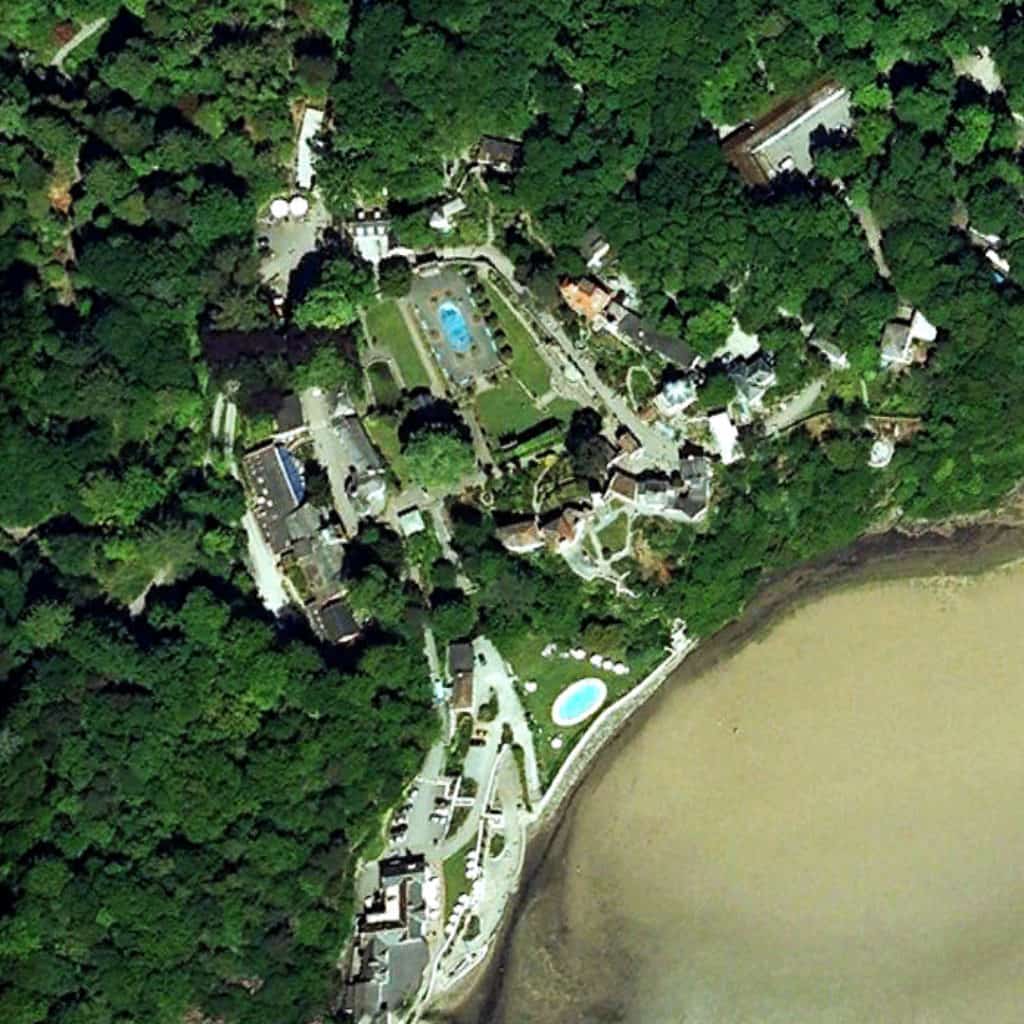
Interestingly, the layout of Portmeirion appears more akin to the layout of a theme park, zoo, or even a modern golf course. There are few distinctive features composed in plan in a manner consistent with traditional settlement – Italian or otherwise – or a modern suburban forms. Instead, the layout is composed of a series of medium- and large-scale loop roads; the largest one being further to the east associated with Castell Deudraeth, which is a restored Victorian building and gardens that re-opened as a hotel in 2001. The most distinctive of these roads incorporate the grounds of the Hotel Portmeirion itself, forming an U-shaped semi-circular vehicular road in relation to the Afon Dwyryd shoreline in the south. This means the most accessible routes for pedestrians (aka tourists) tend to traverse (or, at least, want to) diagonally across the large green spaces of Williams-Ellis’ plan but within the limitations imposed its hard and landscaping features, i.e. paved areas, reflection ponds, etc. Be seeing you.
(Updated: March 29, 2017)
Urban Patterns is a series of posts from The Outlaw Urbanist presenting interesting examples of terrestrial patterns shaped by human intervention in the urban landscape over time.

